Table of Content
IT trends in 2025: What to learn today?
/>Discover the latest IT eduction trends with The Cymes!IT education in 2025:
Imagine this: you step into an elevator and find yourself standing next to the CEO of a successful startup. In those few seconds of ascent, he manages to tell you that the coolest feature of their product wasn't written by a prestigious university graduate, but by a self-taught developer who was working as a barista just six months ago. Sounds like a Silicon Valley screenplay? But this is the reality of the IT industry in 2025.
The tech world is changing at the speed of light, and traditional education can no longer keep up with the trends. Today, it's not about where you studied, but whether you can quickly adapt and master new skills. In this article, we'll explore which knowledge will become the gold standard in the coming years and how not to be left behind by the technological revolution.
Artificial Intelligence: When robots become colleagues
If AI once seemed like something out of science fiction, in 2025 it has become as commonplace as morning coffee. Over 56 percent of machine learning engineers worldwide reported using these tools daily, while approximately 45 percent of data scientists also indicated daily usage. This isn't just statistics—it's a new reality where humans and machines work in tandem.
Moreover, the global machine learning market is growing steadily, projected to reach $113.10 billion in 2025 and further grow to $503.40 billion by 2030 with a CAGR of 34.80%. Imagine that! What used to require months of development can now be done in weeks.
Market statistics
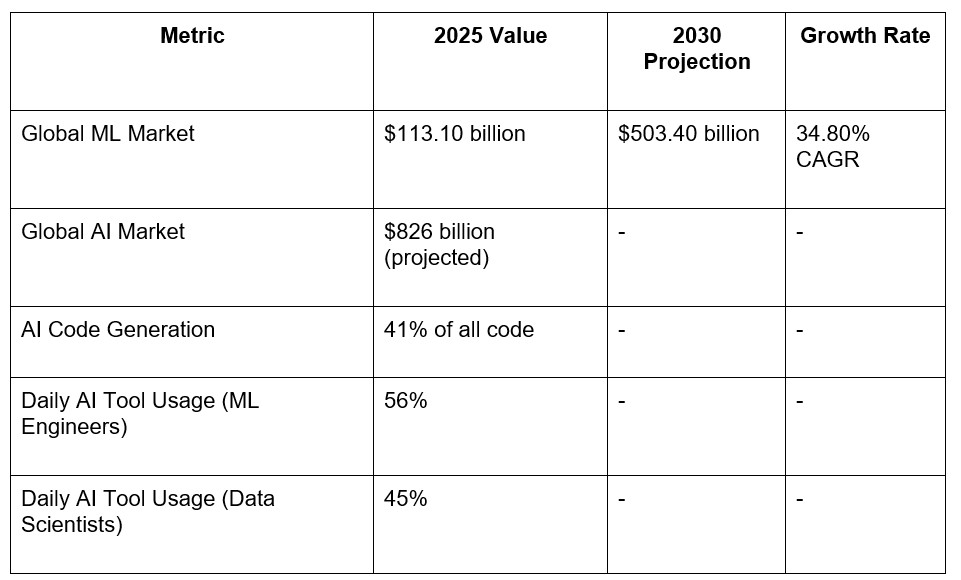
Sources: Statista, Elite Brains, Eluminous Technologies
Interestingly, AI isn't just for data scientists in white coats hunched over algorithms. This technology penetrates all areas of IT:
Backend developers integrate AI functionality directly into products. Remember how primitive website search used to be? Now it can understand context and even user mood.
UI/UX designers create interfaces that "talk" to users. Chatbots have stopped being annoying robots and turned into smart assistants.
Marketers use AI for content personalization to a level that once seemed magical. The system can predict which headline a specific user will prefer.
By 2025, AI might eliminate 85 million jobs but create 97 million new ones, resulting in a net gain of 12 million jobs. The IT sector can gain the most economic benefit from AI implementation among all industries—$400–700 billion/year. That's more than the GDP of many countries!
Blockchain: From hype to real value
Technology evolution
Remember 2017, when everyone talked about blockchain but few understood what it was? Eight years have passed, and the situation has changed dramatically. 60% of Fortune 500 companies are now actively working on blockchain and distributed ledger technology (DLT) initiatives. This marks a sharp rise from just 47% one year ago.
Today, blockchain isn't just about cryptocurrencies. It's the foundation for transparent voting, supply chain tracking, document authenticity verification, and much more.
Market prospects
The growth figures are staggering: the global blockchain technology market will grow from $17.5 billion in 2025 to more than $825 billion in 2034. That's a nearly 50-fold increase in nine years!
Who can profit from this trend?
Blockchain developers create smart contracts and decentralized applications (DApps). It's like being an architect during a construction boom.
Logistics and supply chain specialists use blockchain to track goods in real-time. Imagine: you scan a QR code on a coffee package and see the entire journey of the beans from plantation to your cup.
Marketers launch NFT campaigns and manage digital communities. This is a new level of audience engagement.
Cybersecurity: A war that never ends
Scale of the threat
Every 39 seconds, somewhere in the world, a cyberattack attempt occurs. Daily, more than 30,000 cyberattacks happen on websites worldwide. It's like an invisible war that goes on 24/7.
The economic damage is impressive: cybercrimes will cost the world more than $10.5 trillion per year by mid-2025. For comparison, this is more than the entire global income from drug trafficking, arms dealing, and human trafficking combined.
Cybersecurity market statistics
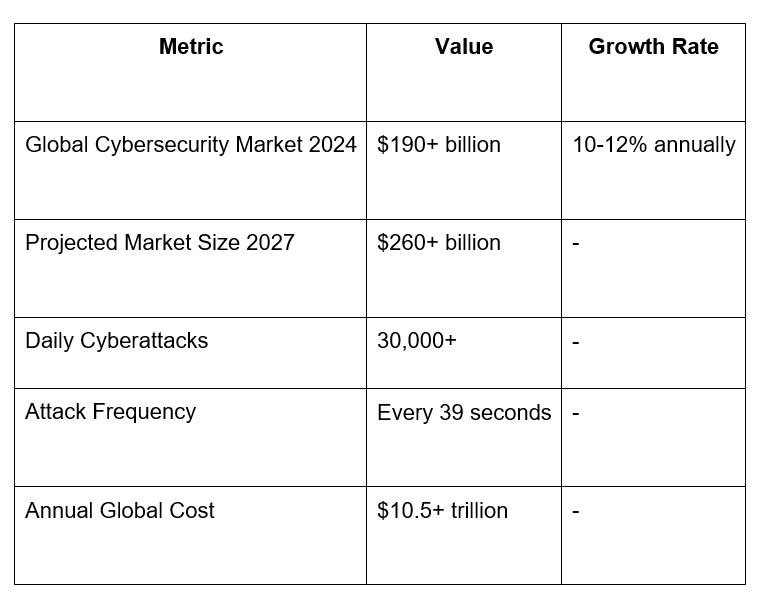
Cloud technologies
Total migration
More than 94% of companies worldwide use cloud services. Practically every business has at least one cloud platform in their IT infrastructure, and most use multi-cloud strategies.
It's like switching from owning a car to car-sharing—more convenient, cheaper, more efficient.
Cloud economics
The figures are impressive: the global cloud technology market exceeded $680 billion in 2024, and by 2027 it's expected to reach more than $947 billion.
Investment boom
80% of companies plan to increase cloud technology budgets throughout 2025. Main investments will go to developing new cloud applications, analytics, data storage, and cloud security.
Cloud market statistics
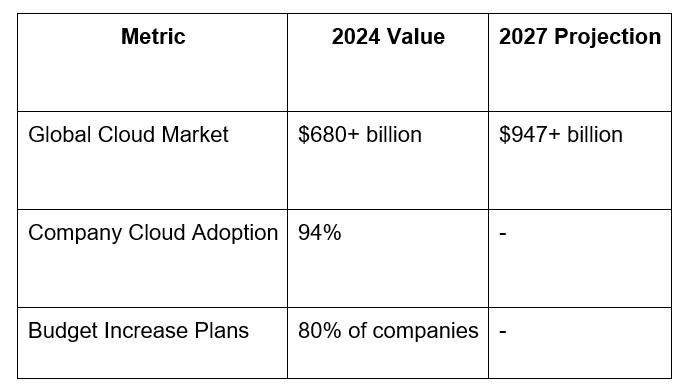
UI/UX Design
Impact on profit
Here's a fact that will make any businessman think: companies that invest in quality UX design get an average of 32% more profit than competitors with worse user experience.
Cause of failures
70% of failures of new applications and websites happen due to poor UX design, not due to lack of functionality or technical errors. It's like building a beautiful house but forgetting to make a convenient entrance.
UI/UX impact statistics
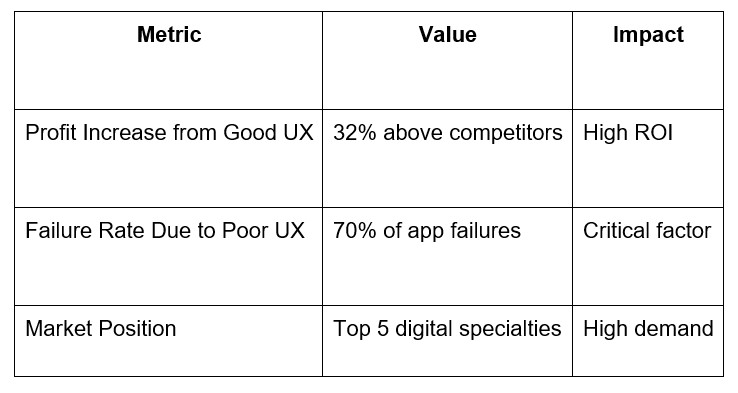
Interdisciplinarity
UI/UX design is no longer the prerogative of designers only. This knowledge is increasingly mastered by product managers, business analysts, frontend developers, QA engineers, and even marketers. This helps them better understand user needs and create truly in-demand products.
DevOps
Age of automation
83% of IT companies worldwide have implemented DevOps practices. This isn't just a trend—it's a necessity for survival in a world of fast releases and high stability requirements.
Kubernetes is used in more than 80% of containerized projects. It's like universal packaging for applications—works equally well everywhere.
DevOps statistics
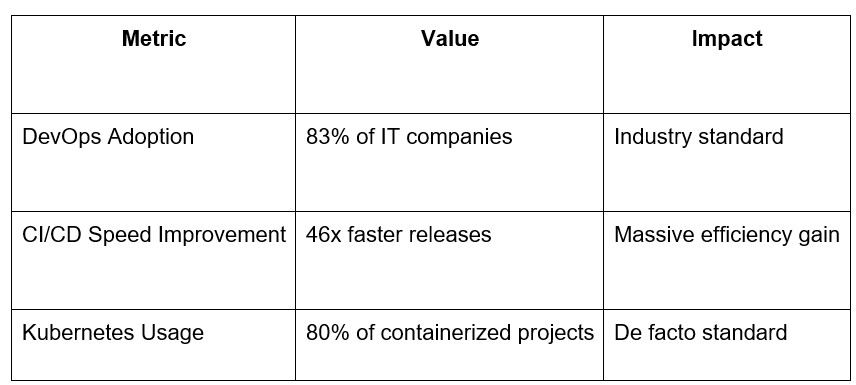
Game development
Growing market
The global video game market exceeded $221 billion in 2024 and is projected to grow to $300+ billion by 2026. This is more than the film and music industries combined.
Mobile revolution
More than 55% of the game industry's revenue comes from mobile games. Pocket devices have become the planet's main gaming platform.
Unity — King of engines
Unity is the world's most popular game engine, used by more than 60% of mobile and VR game developers.
Interdisciplinary team
Game projects unite specialists from different IT directions: from UI/UX designers to DevOps engineers, from analysts to marketers. It's like the film industry—you need a whole army of professionals to create one product.
Practical tips: How to start your journey
1. Determine your starting point
Honestly assess your current skills. Don't try to learn everything at once—that's the path to burnout.
2. Choose one main trend
It's better to become an expert in one area than a dilettante in all. Focus on what genuinely interests you.
3. Start with free resources
The internet is full of quality free courses. YouTube, Coursera, edX—start with them before investing in paid education.
4. Practice on real projects
Theory without practice is dead weight. Create pet projects, participate in open source, make something with your hands.
5. Communicate with the community
Join professional communities, attend meetups, participate in conferences. Networking is an investment in your career.
6. Follow trends
Subscribe to specialized blogs, listen to podcasts, read industry news. IT changes quickly—it's important to stay informed.
Learning in IT today isn't about one narrow specialization, but about flexibility, the ability to work at the intersection of directions, and understanding the product creation process comprehensively.
The most effective specialists are those who constantly keep their finger on the pulse of trends and develop related skills. This doesn't mean you need to know everything about everything. It means you need to be ready to learn for life.
Choose a direction that inspires you and learn systematically. Now is the perfect time to become a competitive specialist in the world of technology.
Remember: in IT there's no second place. There are only those who keep up with changes and those who are left behind. Which group do you want to be in?




